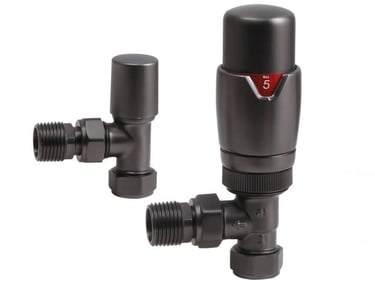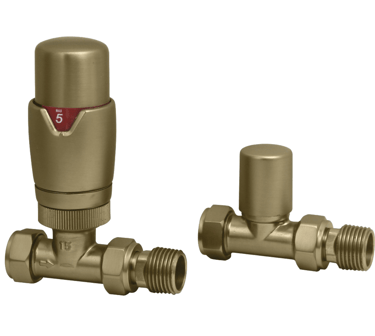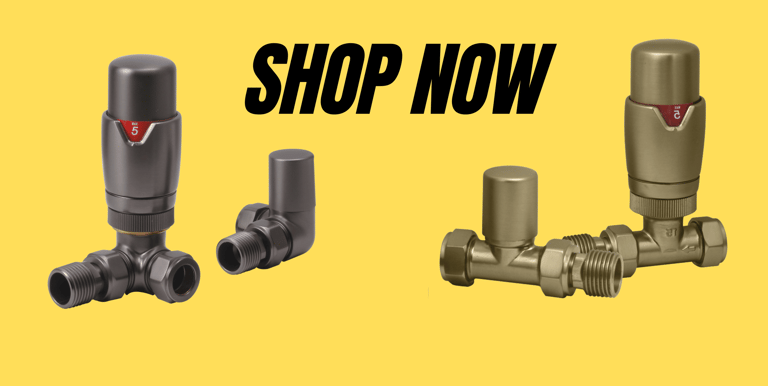
Radiator Valves
Types of Radiator Valves
When it comes to maintaining an optimal temperature within your home, understanding the types of radiator valves available can significantly impact efficiency and comfort. Radiator valves serve as the control points for the flow of hot water through your radiators, thus regulating the heat output and maintaining your desired room temperature. Among the various radiator valves, Thermostatic Radiator Valves (TRVs) and Lockshield Valves stand out due to their specific functionalities and advantages.
Thermostatic Radiator Valves ( TRV's )
Thermostatic Radiator Valves (TRVs) are designed to automatically control the temperature of individual radiators. They sense the air temperature around them and adjust the flow of hot water accordingly. The primary advantage of TRVs is that they allow for room-by-room temperature control, leading to improved energy efficiency and reduced heating costs. By maintaining consistent conditions in designated spaces, TRVs contribute to a more comfortable living environment and help in optimizing overall energy consumption.
Lockshield valve
Lockshield Valves can be bought individually but they are also sold as part of the TRV set,and you get both the TRV and lockshield as a kit, the lockshield plays a pivotal role in balancing the radiator system. Located at the opposite end of the radiator from the TRV or manual valve, these valves are not meant for regular adjustment by users. Instead, they are set during the installation process to ensure even distribution of hot water throughout the heating system. The primary function of Lockshield Valves is to manage the flow rate through each radiator, preventing some radiators from getting more hot water than others. This balancing act is crucial for consistent heating across all radiators in a system.
Buy TRV & Lockshield Sets
Buy Full Range Of TRV & Lockshield Sets
TRVs In Range Of Finishes
Manual Valves
For a comparative perspective, manual radiator valves offer a simpler form of temperature regulation. Unlike TRVs, manual valves require manual adjustment to control the heating output. Although they lack the automatic adjusting features, they can still be effective in smaller spaces or in situations where precise temperature control is not as critical and are often used with towel warmers in a bathroom. Manual valves are straightforward, easy to use, and often more affordable than their thermostatic counterparts.
Understanding the functionalities and advantages of these various valves sets the stage for deeper insights into how each type contributes to efficient and effective home heating. Choosing the right valve, tailored to your specific needs, can greatly enhance your heating system’s performance.How Thermostatic Radiator Valves (TRVs) Enhance Temperature Control
Thermostatic Radiator Valves (TRVs) are a pivotal component in modern heating systems, providing automated temperature regulation for individual radiators. These valves excel in maintaining an optimal ambient temperature, tailoring the heat output in specific areas of a residence. One of the critical elements responsible for this functionality is the thermostatic element within the TRV.
The thermostatic element is typically a wax or liquid capsule that reacts to changes in the surrounding room temperature. When the room temperature increases, the element expands, exerting pressure on a pin connected to the valve. This action partially closes the valve, reducing the hot water flow to the radiator and thus, decreasing the emitted heat. Conversely, when the room temperature drops, the element contracts, causing the pin to retract and allowing more hot water into the radiator to boost the heat output.
Installing TRVs is a straightforward process but must be approached with precision to ensure effective temperature control. Firstly, it's essential to identify the correct inlet and outlet to attach the TRVs correctly. During installation, ensure the valve body is securely tightened to prevent leaks. Once installed, setting adjustments can be made using the numbered dial on the valve. Typically, the dials range from 0 (closed) to 5 (fully open), enabling users to select their desired comfort level. The optimal setting for energy efficiency is around the 3 mark, which corresponds to maintaining an approximate room temperature of 20°C (68°F).
The benefits of TRVs extend beyond mere comfort. They play a substantial role in energy conservation by reducing the demand on central heating systems. TRVs can harmoniously balance the distribution of heat throughout a building, ensuring no unnecessary overheating occurs in rarely used spaces. This individualized approach to heating not only curtails energy usage but also aligns with sustainable living principles by reducing overall energy consumption and heating expenses.
Lockshield valves are integral components in a heating system, primarily responsible for balancing the flow of water within radiators. Their main function is to control the rate at which hot water moves through each radiator, ensuring that an even distribution of heat is achieved throughout the building. This optimization of water flow is crucial for both comfort and efficiency, as it prevents some areas from becoming too warm while others remain cold.
To maximize the performance of lockshield valves, it is essential to adjust them correctly. This process involves partially opening the valve so that the radiator, which is furthest from the boiler, receives enough hot water, while closer radiators receive less. The adjustment can be done using a special key or a standard adjustable spanner, depending on the design of the valve. It is a delicate procedure that often requires balancing expertise as well as patience, as improper adjustment can lead to uneven heating and increased energy consumption.
Problems commonly encountered with lockshield valves typically result from either incorrect settings or sediment buildup. If not set up properly, some radiators may become too hot, while others fail to heat adequately. Regular maintenance, including the occasional flushing of the system to remove sediment, can help to ensure that lockshield valves function effectively. Furthermore, replacing worn or outdated valves can significantly improve heating efficiency.
The interaction between lockshield valves and other types of radiator valves, such as thermostatic radiator valves (TRVs) and manual valves, is also important for optimal heating system performance. While TRVs control the temperature of individual rooms by adjusting the flow based on ambient temperature, lockshield valves ensure that the overall water distribution remains balanced. Therefore, a well-coordinated setup of these valves is essential for achieving a consistent and energy-efficient heating environment.
Understanding the role, proper adjustment, and maintenance of lockshield valves can significantly enhance the functionality and efficiency of your heating system, making it an invaluable knowledge area for homeowners and technicians alike.
Contact Us


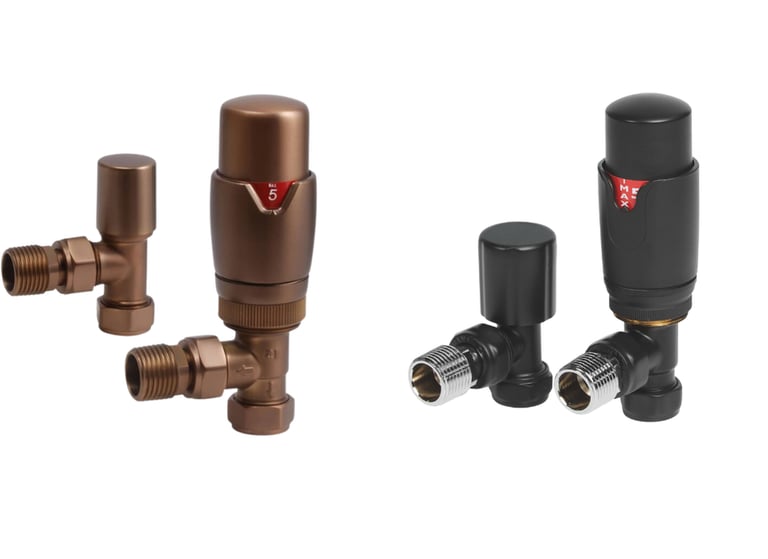


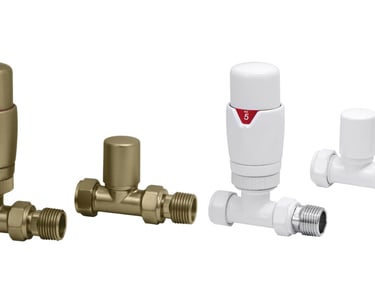
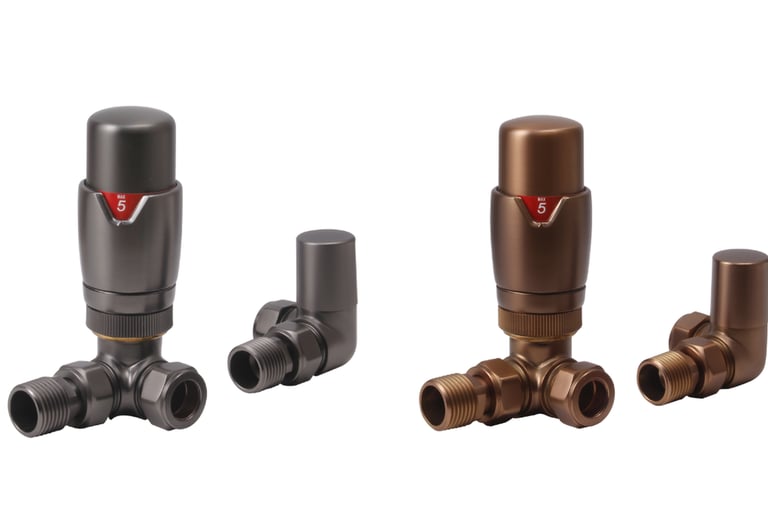

Explore latest trends and innovations in bathroom industry.
News
Videos
sales@plumbsolutions.uk
© 2024. All rights reserved.
Cookies


